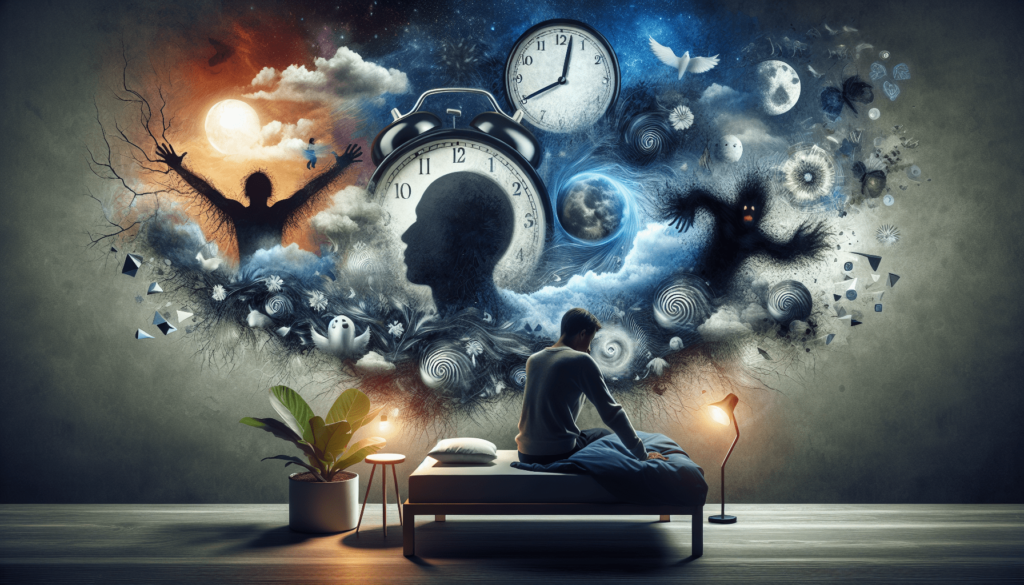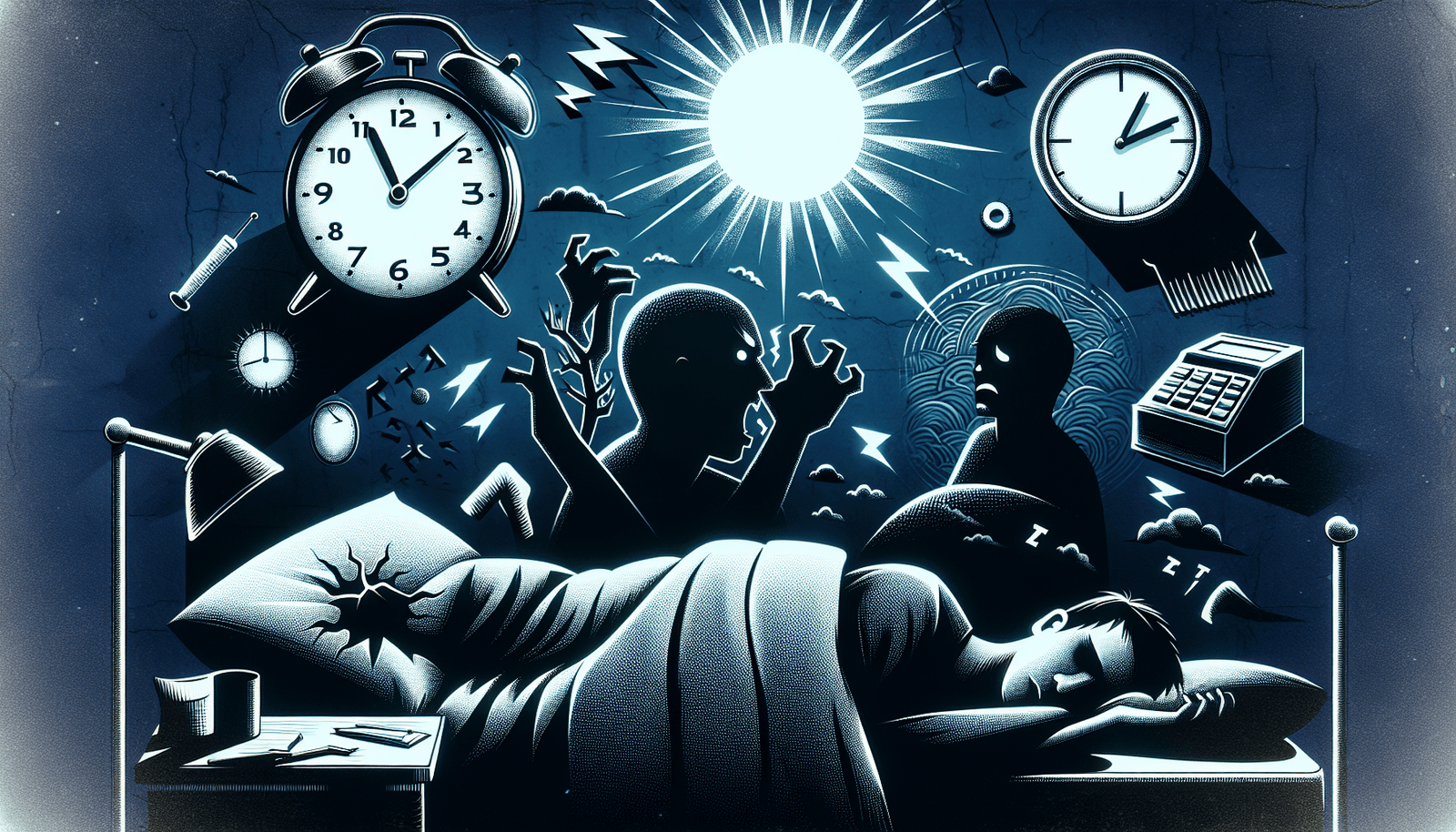You might be surprised to learn just how prevalent sleep disorders are. Many people experience difficulties with their sleep, whether it’s trouble falling asleep, staying asleep, or waking up too early. Sleep disorders can range from insomnia and sleep apnea to narcolepsy and restless leg syndrome. These disorders can significantly impact your daily life and overall well-being, affecting everything from your mood and productivity to your physical health. So, let’s take a closer look at what sleep disorders are, their different types, and just how common they are in today’s society.

Definition of Sleep Disorders
Sleep Disorders Explained
Sleep disorders are a group of conditions that affect the quality and quantity of sleep. They can disrupt the normal sleep patterns and can lead to various physical and mental health issues. Sleep disorders can affect anyone at any age and can have a significant impact on overall well-being.
Types of Sleep Disorders
There are various types of sleep disorders, each with its own set of symptoms and causes. Some common types of sleep disorders include insomnia, sleep apnea, restless legs syndrome, narcolepsy, and shift work sleep disorder. These disorders can significantly disrupt a person’s sleep patterns and lead to daytime fatigue, impaired cognitive function, and other health-related problems.
Prevalence of Sleep Disorders
Global Prevalence
Sleep disorders are a widespread issue globally. According to the World Health Organization (WHO), it is estimated that around one-third of the world’s population suffers from some form of sleep disorder. The prevalence varies across different countries and regions, but sleep disorders are a significant public health concern worldwide.
Common Sleep Disorders
Among the various sleep disorders, some of the most common ones include insomnia, sleep apnea, restless legs syndrome, and narcolepsy. These disorders affect millions of people globally and can have a severe impact on their daily lives. It is essential to understand the causes and symptoms of these disorders to seek appropriate diagnosis and treatment.
Causes of Sleep Disorders
External Factors
Several external factors can contribute to the development of sleep disorders. These factors include poor sleep hygiene, irregular sleep schedules, excessive noise or light during sleep, uncomfortable sleeping environment, and the use of electronic devices before bedtime. Additionally, shift work and travel across different time zones can disrupt the normal sleep-wake cycle and lead to sleep disorders.
Medical Conditions and Disorders
Various medical conditions and disorders can also cause or worsen sleep disorders. For example, conditions such as sleep apnea, restless legs syndrome, and narcolepsy have physiological causes that affect the quality and duration of sleep. Medical disorders like chronic pain, respiratory problems, and psychiatric conditions such as anxiety and depression can also contribute to the development of sleep disorders.
Psychological Factors
Psychological factors, such as stress, anxiety, and depression, can have a significant impact on sleep quality. These mental health issues can disrupt the normal sleep patterns and lead to insomnia or other sleep disorders. Furthermore, certain sleep disorders, such as narcolepsy, can also have psychological components and may be linked to neurological imbalances.

Signs and Symptoms of Sleep Disorders
Sleep Quality and Duration
One of the primary signs of a sleep disorder is poor sleep quality and duration. People with sleep disorders often struggle to fall asleep, have restless or fragmented sleep, or wake up frequently during the night. They may also experience difficulty staying asleep or waking up too early in the morning and being unable to fall back asleep.
Daytime Effects
Sleep disorders can have a significant impact on daytime functioning. Excessive daytime sleepiness, fatigue, lack of concentration, irritability, and mood disturbances are common symptoms experienced by individuals with sleep disorders. These symptoms can affect productivity at work or school and can even lead to accidents or errors.
Diagnosis and Assessment of Sleep Disorders
Medical History and Physical Exam
To diagnose sleep disorders, healthcare professionals typically start with a detailed medical history and physical examination. The doctor will ask about sleep patterns, symptoms, and overall health. They may also inquire about lifestyle factors and any underlying medical conditions that may be causing or contributing to the sleep disorder. A physical examination may be performed to rule out any physical abnormalities or conditions that could be affecting sleep.
Sleep Study and Monitoring
In some cases, a healthcare professional may recommend a sleep study or sleep monitoring to further evaluate and diagnose sleep disorders. This involves spending a night in a sleep center or using a portable home sleep testing kit to monitor various sleep parameters, such as brain activity, heart rate, breathing patterns, and body movement. These tests can provide valuable insights into the nature and severity of the sleep disorder.
Common Sleep Disorders in Adults
Insomnia
Insomnia is a sleep disorder characterized by difficulty falling asleep, staying asleep, or both. It can be caused by various factors, including stress, anxiety, depression, certain medications, and underlying medical conditions. Insomnia can significantly impact daytime functioning and overall quality of life.
Sleep Apnea
Sleep apnea is a disorder in which breathing repeatedly stops and starts during sleep. The most common type of sleep apnea is obstructive sleep apnea, which occurs when the muscles at the back of the throat fail to keep the airway open. Sleep apnea can lead to loud snoring, daytime sleepiness, and an increased risk of cardiovascular problems if left untreated.
Restless Legs Syndrome
Restless legs syndrome (RLS) is a neurological disorder characterized by an uncomfortable sensation in the legs, often described as tingling, crawling, or itching. This sensation typically worsens at rest and is relieved by movement. RLS can lead to difficulty falling asleep and can result in disturbed sleep patterns.
Narcolepsy
Narcolepsy is a chronic neurological disorder that affects the brain’s ability to regulate sleep-wake cycles. People with narcolepsy may experience excessive daytime sleepiness, sudden bouts of uncontrollable sleep called sleep attacks, and cataplexy, a sudden loss of muscle tone triggered by strong emotions. Narcolepsy can have a significant impact on daily life and may require lifelong management.
Shift Work Sleep Disorder
Shift work sleep disorder occurs when a person’s work schedule is misaligned with their natural sleep-wake cycle. This disruption can lead to difficulty falling asleep or staying asleep during the day, and excessive sleepiness or insomnia during the designated sleep time. Shift work sleep disorder can have long-term health implications and may require adjustments in work schedules or sleep interventions.
Common Sleep Disorders in Children
Bedwetting (Enuresis)
Bedwetting, also known as enuresis, is a common sleep disorder in children. It involves involuntary urination during sleep after the age at which bladder control is typically achieved. Bedwetting can be caused by various factors, including genetics, delayed development of the bladder, hormone imbalances, and psychological factors.
Nightmares
Nightmares are vivid, disturbing dreams that occur during rapid eye movement (REM) sleep. Children often experience nightmares, which can cause fear, anxiety, and difficulty falling back asleep. Frequent nightmares may be a sign of an underlying sleep disorder or psychological issue.
Sleepwalking (Somnambulism)
Sleepwalking, or somnambulism, is a condition in which a person engages in complex behaviors during sleep, typically during the deeper stages of non-REM sleep. Sleepwalking can range from minor activities like sitting up in bed to more dangerous actions such as walking or even leaving the house. It is more common in children and can be triggered by factors like sleep deprivation or fever.
Night Terrors
Night terrors, also referred to as sleep terrors, are episodes of intense fear or terror that occur during sleep. Children experiencing night terrors may abruptly sit up in bed, scream, and exhibit signs of extreme agitation and fear. Unlike nightmares, children typically have no memory of these episodes upon waking.
Sleep Talking
Sleep talking, or somniloquy, is a sleep disorder characterized by talking or making sounds during sleep without awareness. It can range from simple mumbling to coherent conversations. Sleep talking is usually harmless, but it can disrupt a person’s sleep or the sleep of their bed partner.
Risk Factors for Sleep Disorders
Age
Sleep disorders can affect individuals of all ages, but certain disorders may be more prevalent in specific age groups. For example, sleep apnea and restless legs syndrome are more common in middle-aged and older adults, while disorders like bedwetting and night terrors are more common in children.
Gender
Gender can also play a role in the prevalence and presentation of sleep disorders. For instance, sleep apnea is more common in men, while insomnia and restless legs syndrome are more prevalent in women. Hormonal fluctuations during the menstrual cycle and menopause can also affect sleep patterns in women.
Medical Conditions
Certain medical conditions, such as obesity, diabetes, cardiovascular disease, and respiratory disorders, can increase the risk of developing sleep disorders. These medical conditions can directly or indirectly affect sleep quality and contribute to the development of sleep disorders.
Lifestyle Factors
Various lifestyle factors can also increase the risk of sleep disorders. Poor sleep hygiene, irregular sleep schedules, excessive alcohol or caffeine consumption, and sedentary lifestyles can all contribute to the development of sleep disorders. Additionally, high-stress levels, including work-related stress or personal life challenges, can also disrupt sleep patterns and increase the risk of sleep disorders.
Effects of Untreated Sleep Disorders
Physical Health Implications
Untreated sleep disorders can have significant physical health implications. Sleep deprivation and poor-quality sleep have been linked to an increased risk of various medical conditions, including obesity, diabetes, cardiovascular disease, and compromised immune function. Additionally, untreated sleep apnea has been associated with an increased risk of hypertension and stroke.
Mental Health Implications
Sleep disorders can also impact mental health. Chronic insomnia, for example, is associated with an increased risk of developing anxiety disorders and depression. Sleep deprivation and disruption of the sleep-wake cycle can also worsen existing mental health conditions and contribute to cognitive impairments.
Daytime Functioning and Performance
One of the primary effects of sleep disorders is impaired daytime functioning and performance. Sleep deprivation and excessive daytime sleepiness can affect cognitive abilities, concentration, memory, and decision-making skills. This can have significant consequences in various areas of life, including work, school, and personal relationships.
Treatment and Management of Sleep Disorders
Medical Interventions
Medical interventions for sleep disorders may vary depending on the specific disorder and its underlying causes. Treatment options may include medications to improve sleep quality or address underlying medical conditions, such as sleep apnea. Continuous positive airway pressure (CPAP) therapy is a common treatment for obstructive sleep apnea. Surgical interventions may be recommended for specific sleep disorders, especially those that involve anatomical abnormalities.
Behavioral Therapy
Behavioral therapy and cognitive-behavioral therapy (CBT) are often effective approaches in treating sleep disorders. These therapies aim to identify and modify negative thoughts, behaviors, and patterns that contribute to poor sleep. Techniques, such as stimulus control therapy, sleep restriction therapy, and relaxation exercises, can help establish healthier sleep habits and improve sleep quality.
Sleep Hygiene Techniques
Incorporating good sleep hygiene practices into daily routines can also significantly improve sleep quality and manage sleep disorders. These practices include maintaining a regular sleep schedule, creating a comfortable sleep environment, avoiding stimulating activities and substances (such as caffeine and electronics) before bedtime, and engaging in relaxation techniques like meditation or deep breathing exercises.
In conclusion, sleep disorders are common and can significantly impact a person’s overall well-being. It is crucial to recognize the signs and symptoms of sleep disorders, seek appropriate diagnosis and treatment, and adopt healthy sleep hygiene practices. Proper management of sleep disorders can lead to improved sleep quality, enhanced daytime functioning, and better overall health.
